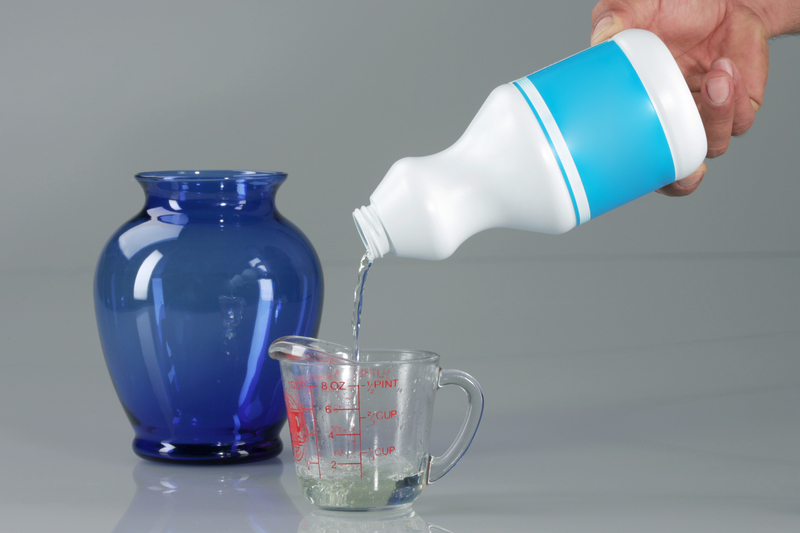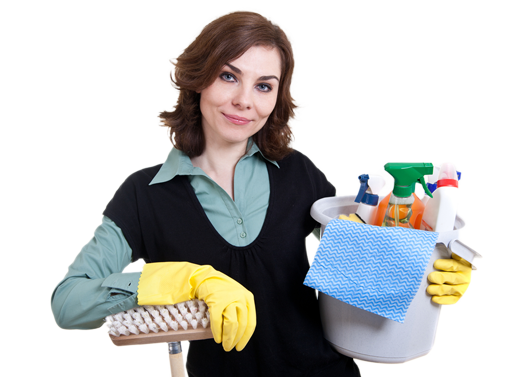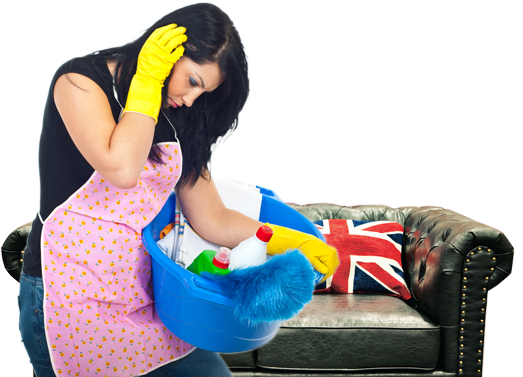Easily Maintain a Mold-Free Bathroom with These Tips
Posted on 28/09/2025
Easily Maintain a Mold-Free Bathroom with These Tips
Mold in the bathroom is more than just an unsightly nuisance. It can also create health risks and decrease the value of your home. Since bathrooms are almost always moist and warm--two conditions mold loves--they're especially vulnerable. However, with some consistent habits and informed choices, keeping your bathroom free from mold can be simpler than you think.

Understanding Mold in the Bathroom
Mold is a type of fungus that thrives in humid, damp environments. Bathrooms often provide the perfect breeding ground thanks to frequent showers, poor ventilation, and lingering condensation. Mold spores spread quickly and can be found on walls, ceilings, tile grout, and even underneath sinks.
Mold isn't just a cosmetic problem. Prolonged exposure to household mold can cause respiratory issues, allergies, and even more severe health concerns in sensitive individuals. Therefore, regular bathroom mold prevention is essential for a healthy home.
Why Is Mold So Common in Bathrooms?
Bathrooms are notorious for harboring mold because they offer:
- High humidity levels: Hot showers and baths fill the air with steam that condenses on surfaces.
- Poor ventilation: Small or windowless bathrooms trap moisture inside.
- Organic material: Soap residue, wood, and dust can feed mold spores.
- Frequent leaks: Leaky faucets or plumbing invite water accumulation and mold growth.
Comprehensive Tips to Keep Your Bathroom Mold-Free
Adopting a few practical strategies can make a huge difference in mold prevention and ensure your bathroom remains clean, healthy, and inviting.
1. Improve Bathroom Ventilation
Enhanced bathroom airflow is the number one way to keep mold at bay. Good ventilation removes moisture-laden air and dries surfaces more rapidly.
- Open a Window: If your bathroom has a window, crack it open during and after hot showers to allow humidity to escape.
- Install or Upgrade Exhaust Fans: An efficient exhaust fan quickly removes excess steam. Ensure your fan is correctly rated for your bathroom's size and run it for at least 20 minutes after bathing.
- Leave Doors Open: Leaving the bathroom door open following use encourages air circulation.
2. Wipe Down Surfaces Regularly
Moisture lingering on walls, tiles, and other surfaces leads directly to mold formation in the bathroom. Drying these surfaces halts spores before they can take hold.
- After each shower, use a squeegee or absorbent towel to wipe down walls, doors, and counters.
- Mop up water near the bathtub or toilet to prevent water from seeping into grout or flooring.
- Don't forget small corners and the base of the shower, as mold loves hidden, damp areas.
3. Keep the Bathroom Dry
Moisture control is essential for a mold-proof bathroom:
- Dry towels and bathmats after use. Hang them in a well-ventilated area instead of piling them up damp.
- Wipe water spills immediately from the floor, countertops, and underneath sinks.
- Fix leaks right away. Even a slow drip can provide enough moisture for mold growth.
4. Clean Routinely Using Mold-Preventing Solutions
Establishing a bathroom cleaning schedule is crucial for mold absence:
- Use mold-inhibiting cleaners for showers, grout, and tiles.
- Bleach, hydrogen peroxide, or vinegar are effective for killing and preventing mold. Always ventilate well and never mix cleaners.
- Pay special attention to grout lines, behind toilets, and underneath bathmats.
5. Upgrade Bathroom Materials
Smart renovations can deliver a mold-resistant bathroom for years to come:
- Select mold-resistant paint or waterproof coatings for walls and ceilings. These products inhibit mold colonization and are easy to clean.
- If budget allows, replace old wallpaper with mildew-resistant options or waterproof tiles.
- Consider anti-microbial grout when retiling showers or floors.
6. Declutter and Organize
Overcrowded countertops and shelves collect dust and restrict airflow, making mold growth easier:
- Minimize possessions in the bathroom and store only what you use regularly.
- Make use of open shelves that allow better air movement.
- Avoid fabric organizers that can retain water and become moldy themselves.
7. Use a Dehumidifier or Moisture Absorber
If your bathroom is still damp despite your best efforts, try these aids:
- Small dehumidifiers can lower humidity levels below the threshold where mold can thrive (ideally, below 60%).
- Consider moisture-absorbing products like silica gel or specially formulated bathroom moisture traps.
8. Address Hidden Water Leaks Promptly
Even the smallest, unnoticed leaks under sinks, behind toilets, or in the tub surround can feed mold for months:
- Regularly check plumbing fixtures for drips and puddles.
- Look for discoloration, bubbling paint, or musty odors that may indicate a hidden water problem.
- Consult a plumber for quick repairs to minimize water exposure and the risk of bathroom mold.
9. Clean or Replace Shower Curtains Frequently
Shower curtains, especially fabric ones, are magnets for mildew and black mold.
- Wash shower curtains and liners with hot water and mild detergent every few weeks.
- Opt for mildew-resistant vinyl or plastic liners if possible.
- Hang curtains fully extended so water doesn't collect in folds.
10. Inspect and Clean Exhaust Fans
A well-functioning exhaust fan can make a world of difference in bathroom moisture control.
- Clean fan grilles and blades regularly to keep them working efficiently.
- Check for obstructions and ensure vents are free-flowing to the outdoors.
- Replace old, noisy, or underperforming fans to maximize airflow.
DIY Natural Mold Prevention Remedies
Prefer to prevent mold naturally? Here are some simple, non-toxic solutions:
- White Vinegar Spray: Fill a spray bottle with undiluted vinegar and spritz bathroom surfaces after use. Vinegar is mildly acidic, killing most mold species on contact.
- Baking Soda Paste: Mix with water and apply to grout or tile. Let sit 10 minutes, scrub, and rinse. Baking soda removes odors and prevents mold recurrence.
- Lemon Juice: Natural citric acid helps dissolve mold and leaves a fresh scent.
- Tea tree oil diluted with water also has anti-fungal properties. Use only a few drops since it has a strong smell and can be irritating if used in excess.
How to Remove Existing Bathroom Mold
Already found a patch of mold? Don't worry--most small infestations can be handled without professional help, using these steps:
- Protect Yourself: Wear gloves, goggles, and a mask. Ventilate the area well before cleaning.
- Mix Cleaning Solution: Use a commercial anti-mold spray or a homemade mixture (one part bleach to ten parts water, or pure white vinegar).
- Scrub the Area: Use a stiff-bristled brush on grout and tile. Let cleaners sit for 10-15 minutes before scrubbing.
- Rinse thoroughly and dry completely to prevent mold from returning.
- Dispose of any cleaning cloths or sponges so they don't spread spores around your home.
When to Call a Professional
While many bathroom mold problems can be managed on your own, sometimes hiring an expert is safer and more effective:
- Large infestations (over 10 square feet) require professional remediation.
- If mold keeps returning despite your efforts, underlying leaks or ventilation failures may be to blame.
- Persistent, severe musty odors or visible mold in drywall and insulation mean hidden growth that should be assessed and removed by specialists.
Maintaining a Mold-Free Bathroom: Your Final Checklist
To sum up, follow this quick bathroom mold prevention checklist:
- Ventilate with fans or open windows daily
- Dry all surfaces after use
- Clean weekly with effective anti-mold products
- Declutter damp-prone areas
- Choose mold-resistant paints and materials
- Wash or replace shower curtains and bathmats frequently
- Check for leaks and address issues immediately

Frequently Asked Questions About Mold-Free Bathrooms
How often should I clean my bathroom to prevent mold?
Regular cleaning is key. At a minimum, wipe down surfaces after each use and deep clean (with a mold-preventing cleaner) weekly. Address spills and leaks right away for best results.
Are there any mold-resistant building materials I should consider?
Yes--look for mold-resistant drywall (greenboard), waterproof tiles, and specialty anti-microbial grouts. Use water-resistant caulk around tubs and sinks to seal out moisture.
Can poor water quality make mold worse?
Hard water can leave mineral deposits that trap moisture on surfaces, indirectly contributing to mold growth. Installing a water softener or regularly cleaning mineral buildup can help.
Is bathroom mold dangerous?
Exposure to mold can trigger allergies, asthma, or respiratory symptoms, especially in vulnerable people. Preventing mold ensures a safer, healthier living space.
Conclusion: Enjoy a Mold-Free, Fresh Bathroom With Ease
While it's normal for bathrooms to get humid, taking simple, consistent steps can keep mold under control. By improving ventilation, cleaning regularly, addressing leaks, and using smart materials, you can easily maintain a mold-free bathroom. Prioritize these habits for a cleaner, safer, and more comfortable home--your lungs and property value will thank you!





